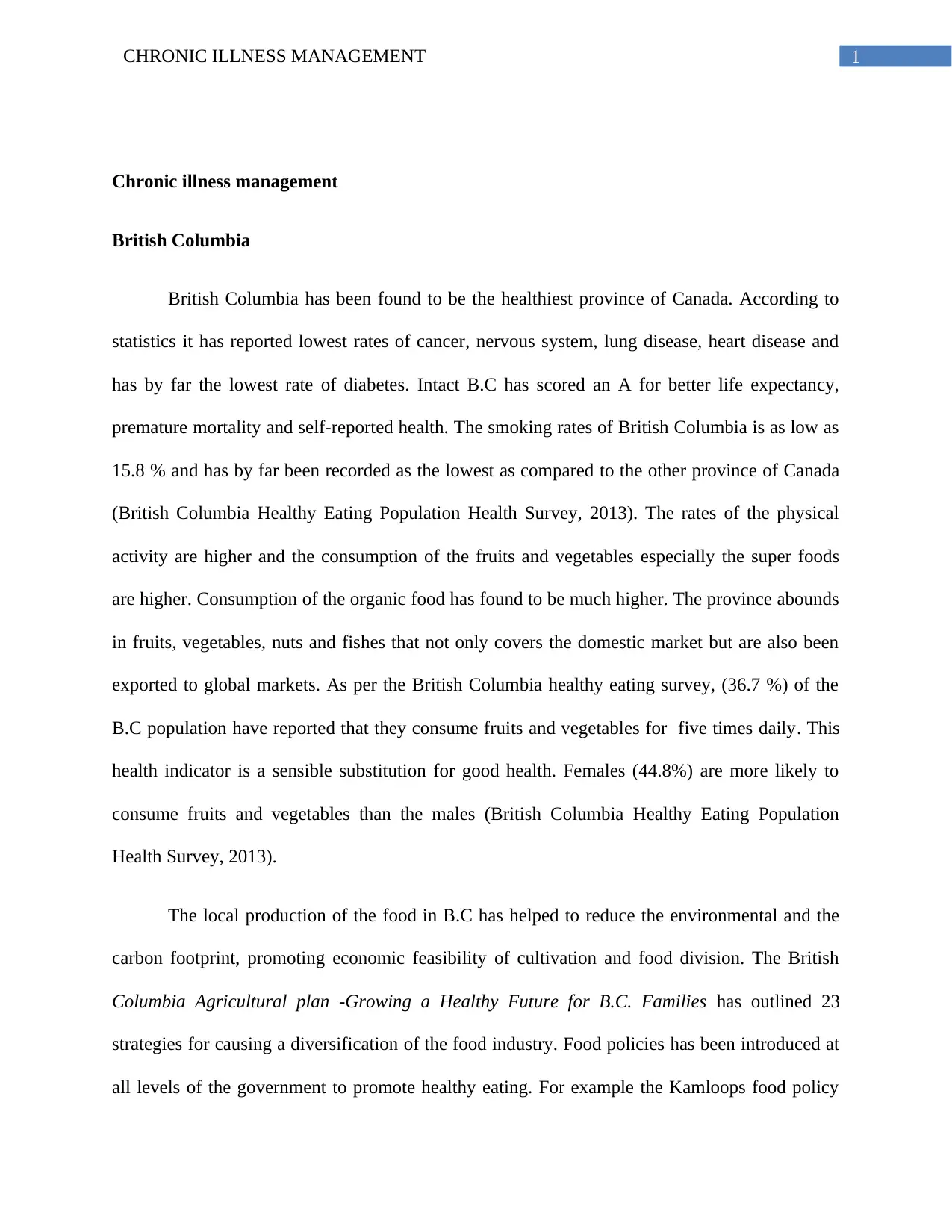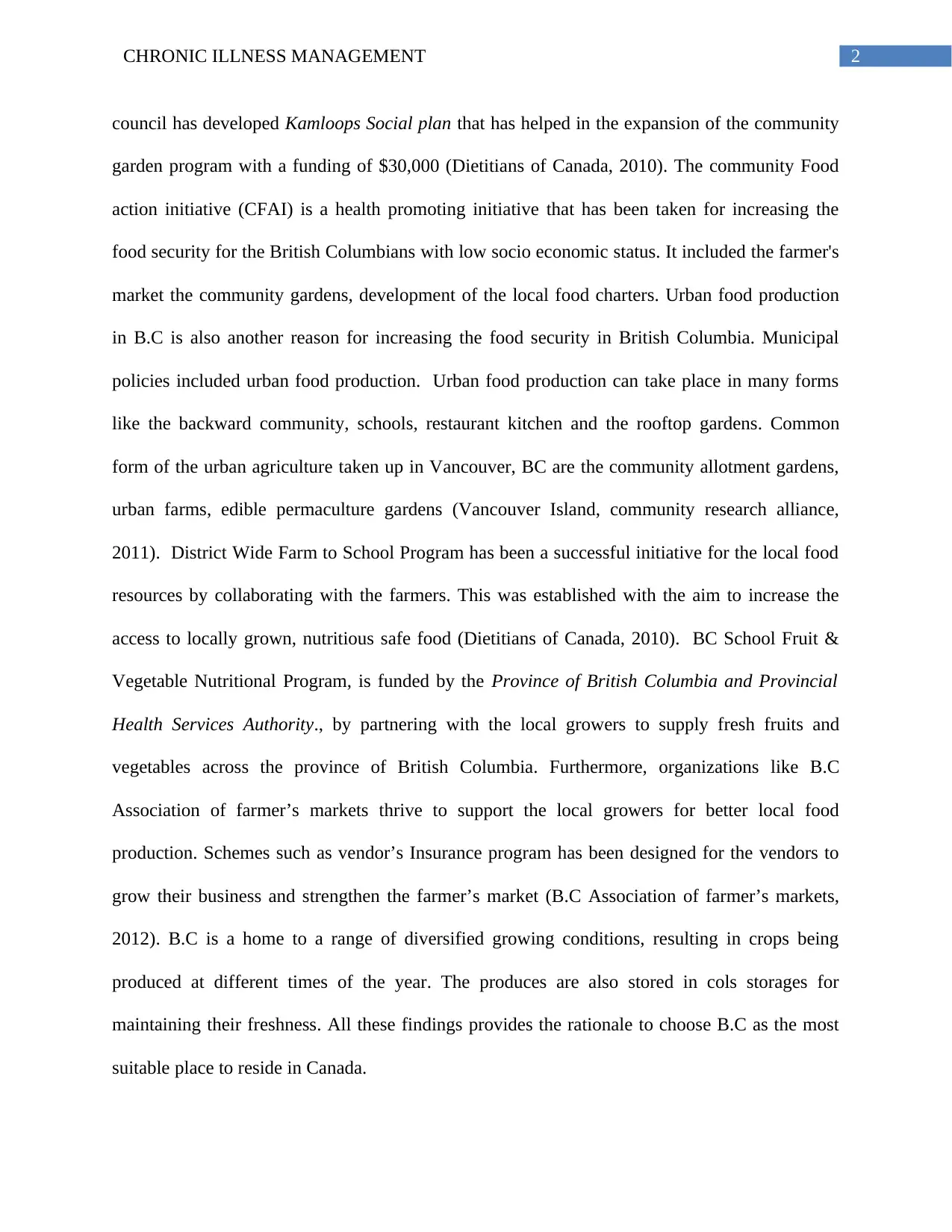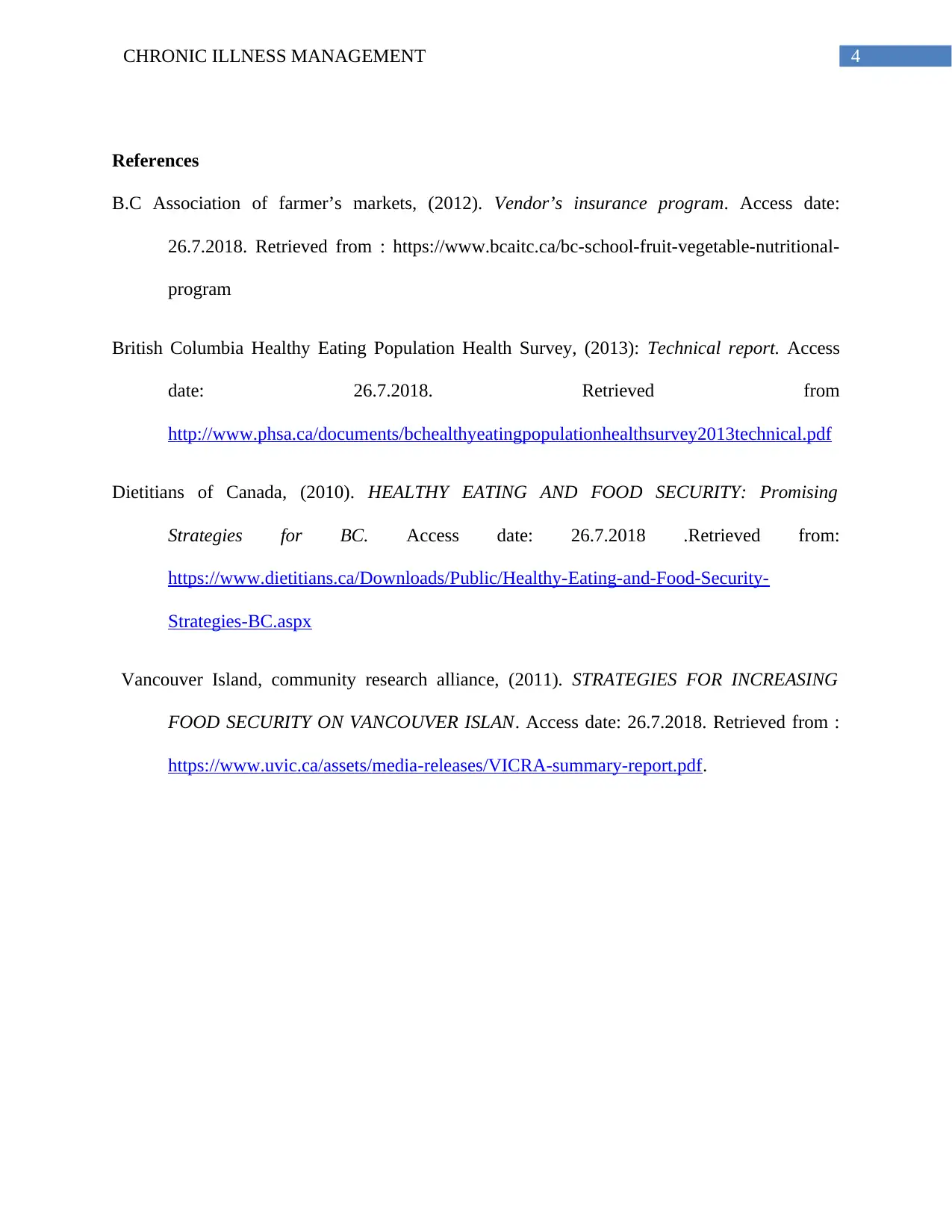Analyzing British Columbia for Chronic Illness Management
VerifiedAdded on 2023/06/09
|5
|831
|447
Discussion Board Post
AI Summary
This discussion post examines British Columbia as the most suitable province for individuals managing chronic illnesses. The analysis is based on the provided assignment brief, which required a review of health indicators and policies. The student highlights British Columbia's superior health outcomes, including lower rates of cancer, heart disease, diabetes, and smoking, supported by statistical data. The post emphasizes the province's high rates of fruit and vegetable consumption, and details policies such as the British Columbia Agricultural Plan and the Kamloops Social Plan, which promote healthy eating and food security through initiatives like community gardens and farmer's markets. The post also references urban food production programs and the District Wide Farm to School Program. The conclusion is supported by the findings and relevant references.
1 out of 5






![[object Object]](/_next/static/media/star-bottom.7253800d.svg)